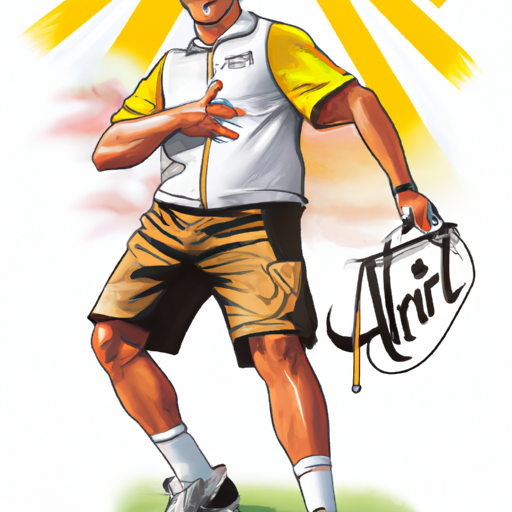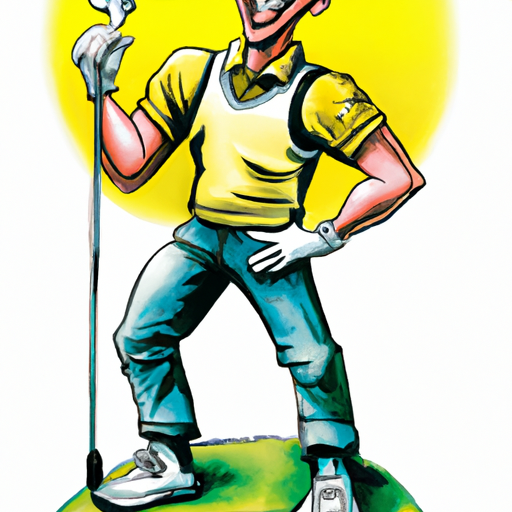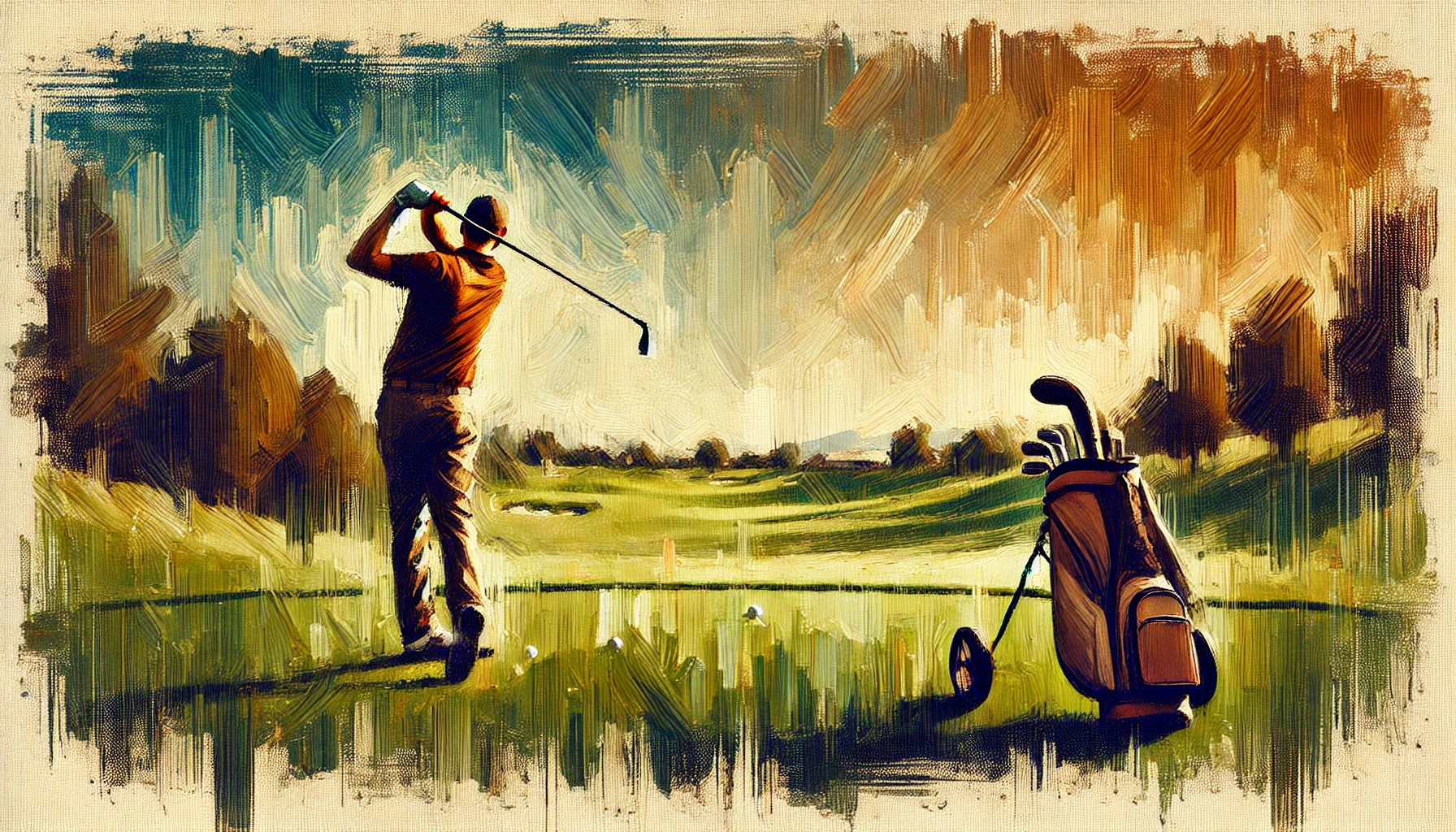- Home
- Golf Swing
- Slow Golf Swing
Master the Slow Golf Swing: Boost Your Game and Impress Your Buddies
Have you ever watched a pro golfer swing and wondered how they make it look so effortless? That's the magic of a slow golf swing. It's a technique that can transform your game, boosting your control, accuracy, and even distance.
And the best part?
It's something you can learn and master, no matter your current skill level.
Now, imagine stepping onto the golf course, club in hand. You're feeling confident, relaxed. You take your stance, perform your backswing slowly and smoothly, then follow through with perfect control. The ball soars, landing exactly where you aimed.
That's the power of a slow golf swing.
But it's not just about improving your game.
- It's about the respect and admiration you'll earn from your buddies.
- It's about the satisfaction of knowing you're playing your best game.
- It's about the thrill of seeing the surprised faces of your friends when you outdrive them, all thanks to your mastered slow golf swing.
So, are you ready to transform your golf game? Are you ready to impress your buddies with your newfound skills?
Then let's dive in and explore the world of slow golf swing. It's time to unlock your golfing potential.
Introduction to the Slow Golf Swing
Golf is a game of finesse and control, where the power of your swing doesn't always equate to better performance. In fact, the secret to a more accurate and longer drive often lies in a "slow golf swing".
But what does this mean, and how can you achieve it?
Let's dive in and unravel the mystery behind the slow golf swing, and how it can transform your game from inconsistent to impressive.
The Benefits of a Slow Golf Swing
The first question that might pop into your mind is, "How do you swing slow in golf?"
Before we answer that, let's explore why a slower swing can be beneficial. Contrary to popular belief, a slower swing doesn't mean less power. Instead, it often leads to better control, improved accuracy, and even increased distance. It allows you to connect with the ball in the sweet spot consistently, leading to better shots and lower scores.
A slower swing also reduces the risk of injury. By not forcing your body into unnatural and quick movements, you're less likely to strain your muscles or hurt your joints.
So, not only does a slow golf swing improve your game, but it also helps you stay fit and healthy to enjoy the game for longer.
How to Achieve a Slow Golf Swing
So, how do you achieve this coveted slow golf swing?
It's all about control and rhythm. Start with a relaxed grip and stance.
As you begin your backswing, focus on smooth, even motion rather than speed. Let your hips and torso lead the swing, with your arms and club following naturally. Practice this slower, controlled swing until it becomes second nature.
Remember, the goal isn't to slow down your swing to a crawl. Instead, it's about finding a comfortable pace that allows you to maintain control and make a clean, solid contact with the ball. It's about quality, not speed.
Increasing Distance with a Slow Swing Speed
Now, you might be wondering, "How do I get more distance with a slow swing speed?"
The key lies in the quality of your strike.
A slower swing allows for better control, which in turn leads to more consistent and accurate strikes. This accuracy, combined with the right club and ball selection, can result in surprising distance, even with a slower swing speed.
It's also worth noting that a slower swing speed doesn't necessarily mean less power. By using your body efficiently and making solid contact with the ball, you can generate plenty of power, even with a slower swing.
Understanding the Backswing
The backswing plays a crucial role in your golf swing. But "Is it better to have a slow backswing?" or "Is it better to have a fast or slow backswing?"
The answer is, it depends on your overall swing rhythm and what works best for you. However, a slower, controlled backswing often leads to a better transition into the downswing and a more accurate strike.
A slow backswing allows you to maintain control and set up for a powerful downswing. It gives you time to position your body correctly and align your club for the perfect strike. So, while it might feel counterintuitive, slowing down your backswing could be the key to unlocking your golfing potential.
Preventing Over-Swinging
How to prevent swinging too hard in golf is a common question among golfers. Over-swinging can lead to loss of control and accuracy.
To prevent this, focus on maintaining a smooth, controlled swing. Don't try to hit the ball as hard as possible; instead, aim for a clean, accurate strike. Remember, golf is a game of precision, not power.
Over-swinging often stems from the desire to hit the ball as far as possible. However, this can lead to poor form, inconsistent shots, and even injury. By focusing on a slow, controlled swing, you can prevent over-swinging and improve your overall game.
The Role of Tempo in a Slow Golf Swing
Tempo is the rhythm or timing of your swing, and it plays a significant role in achieving a slow golf swing. A consistent tempo allows for a smoother swing and better ball striking. Try counting in your head during your swing or using a metronome to help establish a consistent tempo.
A good tempo helps synchronize your body movements and ensures that all parts of your swing - from the takeaway to the follow-through - work together in harmony. It's not about being slow or fast, but about being consistent. And a consistent tempo can lead to more consistent shots.
Conclusion
Mastering the slow golf swing can lead to significant improvements in your golf game. It can increase your control, accuracy, and even the distance of your shots.
Remember, the key to a successful golf swing isn't speed, but control and rhythm. So, next time you're on the course, slow down your swing and watch as your game improves.
Key Takeaways
1. A slow golf swing can lead to better control, accuracy, and distance.
2. Achieving a slow swing involves a relaxed grip, smooth motion, and letting your body lead the swing.
3. A slow backswing can lead to a better transition into the downswing and a more accurate strike.
4. Over-swinging can be prevented by focusing on a smooth, controlled swing and aiming for a clean, accurate strike.
5. Tempo plays a significant role in achieving a slow golf swing. A consistent tempo allows for a smoother swing and better ball striking.
Remember, golf isn't just about power; it's about control, precision, and finesse. By mastering the slow golf swing, you'll not only improve your game but also gain the confidence to compete against stronger, better-equipped golfers.
And who knows, you might just find yourself hitting those long, straight tee shots you've always dreamed of. So, take a deep breath, slow down your swing, and get ready to impress your buddies on your next round of golf.
Frequently Asked Questions about the Slow Golf Swing
What is a slow golf swing?
What is a slow golf swing?
A slow golf swing is a technique where the golfer focuses on control and rhythm rather than speed. It's about making a smooth, even motion from the backswing to the follow-through, allowing for better control, accuracy, and potentially even increased distance.
How do you swing slow in golf?
How do you swing slow in golf?
Achieving a slow golf swing involves a relaxed grip, a smooth motion, and allowing your body to lead the swing. It's about maintaining a comfortable pace that lets you make a clean, solid contact with the ball. Practice this slower, controlled swing until it becomes second nature.
How do I get more distance with a slow swing speed?
How do I get more distance with a slow swing speed?
Getting more distance with a slow swing speed is all about the quality of your strike. A slower swing allows for better control, leading to more consistent and accurate strikes. This accuracy, combined with the right club and ball selection, can result in surprising distance, even with a slower swing speed.
Is it better to have a slow backswing?
Is it better to have a slow backswing?
A slow backswing can lead to a better transition into the downswing and a more accurate strike. It allows you to maintain control and set up for a powerful downswing. So, while it might feel counterintuitive, slowing down your backswing could be the key to unlocking your golfing potential.
How to prevent swinging too hard in golf?
How to prevent swinging too hard in golf?
Preventing over-swinging involves focusing on a smooth, controlled swing and aiming for a clean, accurate strike. Don't try to hit the ball as hard as possible; instead, aim for a clean, accurate strike. Remember, golf is a game of precision, not power.
What is the role of tempo in a slow golf swing?
What is the role of tempo in a slow golf swing?
Tempo is the rhythm or timing of your swing, and it plays a significant role in achieving a slow golf swing. A consistent tempo allows for a smoother swing and better ball striking. Try counting in your head during your swing or using a metronome to help establish a consistent tempo.
Why does a slow golf swing lead to better control and accuracy?
Why does a slow golf swing lead to better control and accuracy?
A slower swing allows you more time to ensure your body and club are in the correct positions throughout the swing. This can lead to better control over the club and more accurate strikes on the ball.
How can a slow golf swing improve my game?
How can a slow golf swing improve my game?
A slow golf swing can improve your game by increasing your control, accuracy, and potentially even the distance of your shots. It can also reduce the risk of injury by avoiding unnatural and quick movements.
Can a slow golf swing help me impress my buddies?
Can a slow golf swing help me impress my buddies?
Absolutely! Mastering the slow golf swing can lead to significant improvements in your game, which will surely impress your golfing buddies. It can increase your control, accuracy, and even the distance of your shots, making you a formidable opponent on the golf course.























